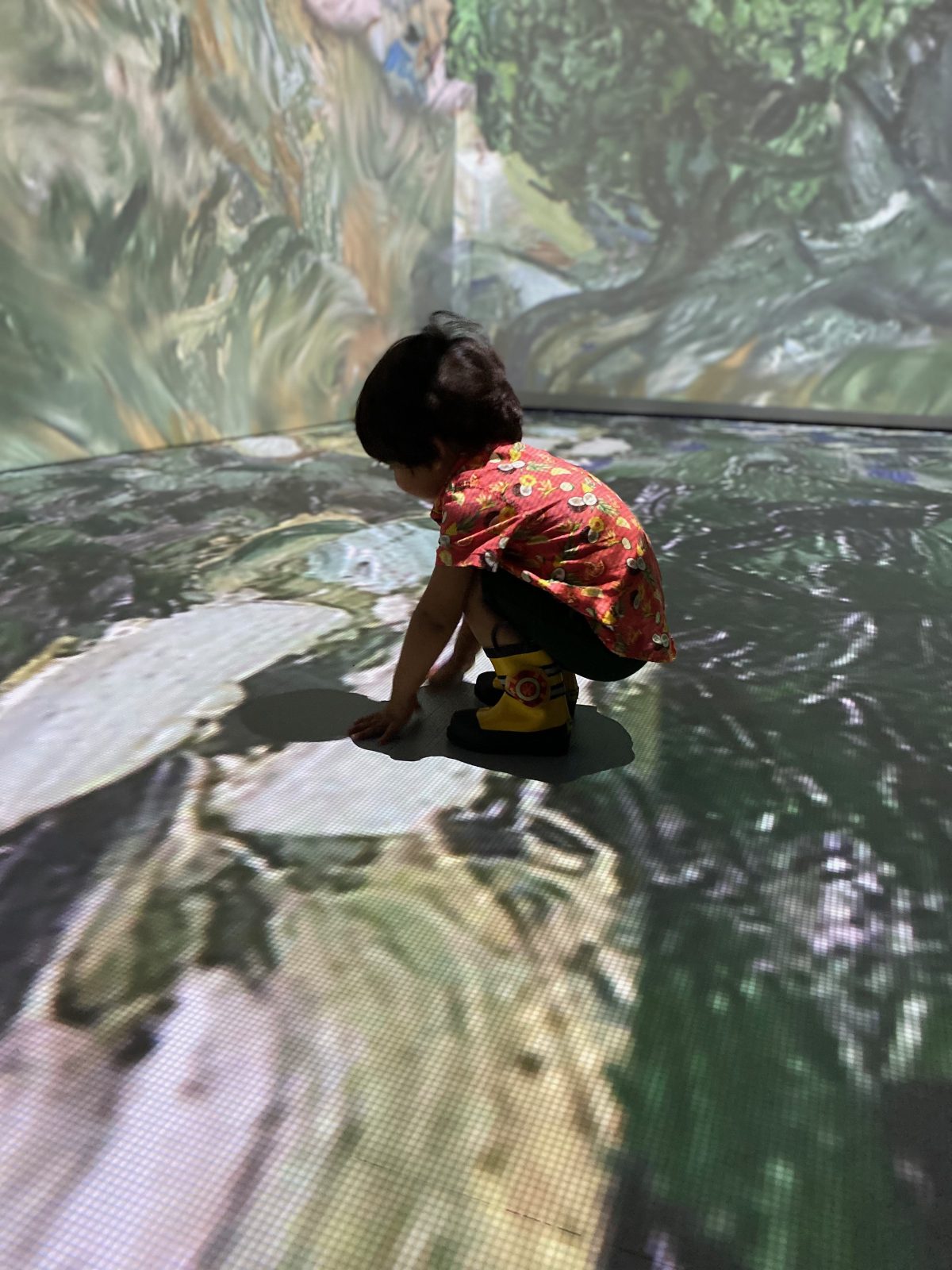
I don’t like Vincent van Gogh. Not for me are fields of sunflowers, smudgy portraiture, and Parisian cafes. And yet, on a scorching Texas day, I found myself shuffling through Beyond Van Gogh: The Immersive Experience, and — horrors! — liking it. The culprits behind this caper?? are entirely my children, who are four and two and therefore require entertainment every weekend — ideally activities that can engage their senses, cause minimal destruction, and be air-conditioned.
Beyond Van Gogh checked all these boxes and more. It is, at least in our Austin iteration (there are others, in Paris and elsewhere), housed in an enormous white hangar, where “cutting edge projection technology” spin out Van Gogh’s paintings on all available surfaces. All the paratext — biographical information, correspondence with his brother Theo, his artistic vision — is collected at the entrance, and I confess I paid it very little attention. (Don’t judge me, I have kids.)
Once you are within the exhibition itself, however, the magic starts. We stumbled in as “Almond Blossoms” (1890) started its growth cycle, and after about two minutes of acclimatization, the kids were entranced, as (for shame) was I. The two-year-old was, well, two. He tried to catch the paint chunks that flickered on the floor, and, having recently learned “twinkle twinkle little star” was naturally delighted by “Starry Night” (1899). The four-year-old, on the other hand, had been prepped by her dad in advance, and had deeper questions, such as “How can we be in the picture?” and, in response to the projection up-swoop of “Café Terrace At Night” (1988), “Why are we in an elevator?” This was as good a chance as any to talk about depth and perspective. Eventually, there was just looking: looking at art coming to digital life.

I won’t pretend that what I told my daughter was sophisticated art criticism, though it was very age-appropriate. If Beyond Van Gogh is art straight out of Harry Potter — portraits wink and signatures write themselves — it is also accessible, and enchanting enough to capture the attention of kids for whom immobile art is very last century. As an entrée to the wide world of art, Beyond Van Gogh is charming and perfect.
Raising kids who love art is a value in our family. Research reported by the National Endowment for the Arts shows a positive link between art participation and social and emotional skills in early childhood. Growing up with and around art, for instance by visiting museums, has likewise established benefits: critical thinking, imagination, exploration. Still, any early childhood education expert will tell you: Play is the key to healthy child development, and what this experience was, above all, was playful.
It worked too. The next day, my daughter told all her friends that she was in a picture. She still knows Van Gogh drew the “Sunflowers” (1888), and this weekend insisted we check out a full color catalog of his paintings from our local library. It might have initially horrified my sensibilities, but playful immersion deepened her sense of what art can do, and how she belonged in it.
Playful immersive art has a long pedigree: The ancient Romans commissioned frescoes of gardens hung with living art; Mary Poppins jumped Jane and Michael into chalk paintings; and nearly every Disney film purports to carry the young viewer into the physical pages of a book. These are mostly commercial endeavors, to be sure, with their dark associations of greedy capitalism. Beyond Van Gogh is not cheap — adult admission on weekends is $46.99, on weekdays $36.99. Children under five are free, but those five to 15 pay $23.99–$29.99 — and the more commercialized art becomes, the bigger the barrier to entry. Since children deserve to be around art that makes them thrive, we must work to make these kinds of exhibitions much, much more accessible. This effort should be part and parcel of a systematic investment in children’s futures, starting with affordable childcare and ending with community resources like free museums.
Until then, immersive art like Beyond Van Gogh has much to offer. It provides a family-friendly space where young people can viscerally feel how art acts on the world. And it lets us talk, too, about snobbery, policy, and politics, and about how these things keep us from a full-throated enjoyment of all art has to offer.
So I take it back, I’m a convert. Pick up your sunflowers and follow me.
0 Commentaires